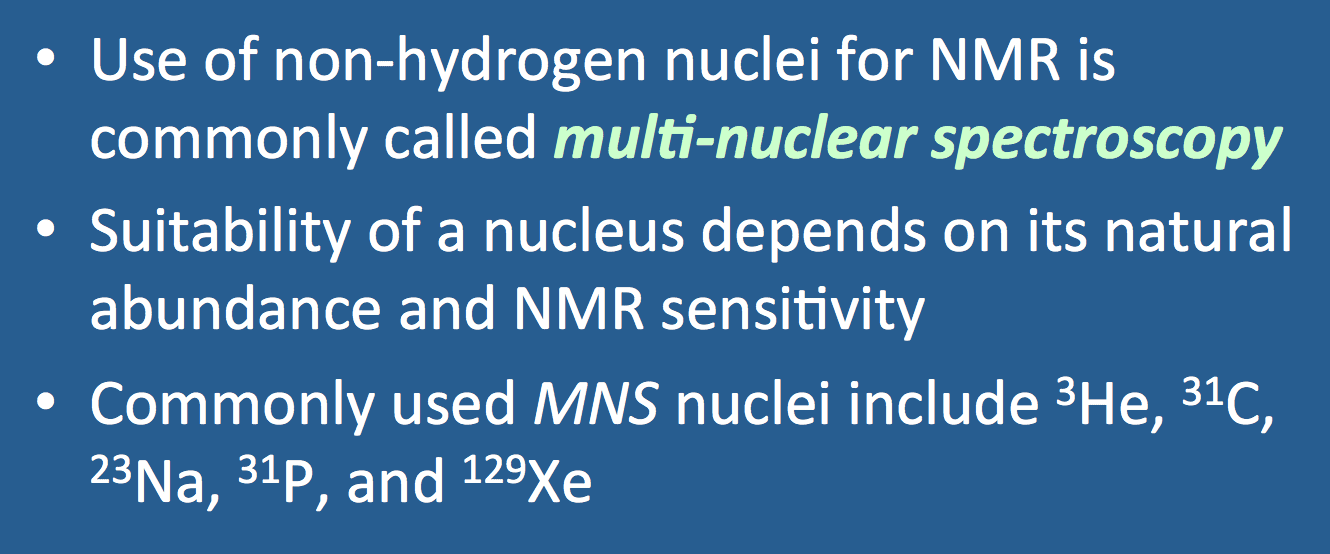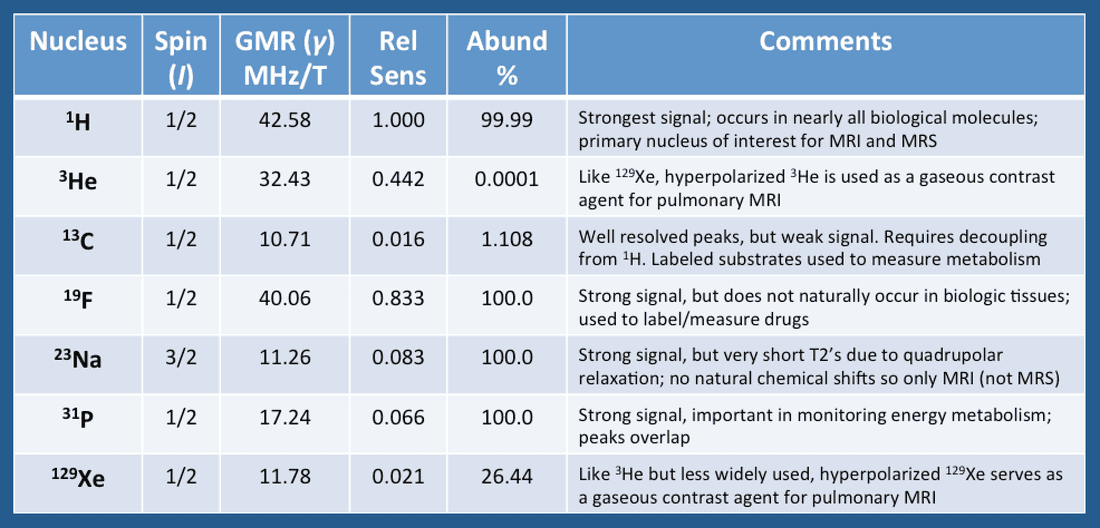Multi-nuclear spectroscopy (MNS) refers to the use of nuclei besides hydrogen (¹H) for NMR studies. Organic molecules typically contain several such nuclei with non-zero spins that are "NMR-active". However, the ability to acquire an adequate signal or spectrum from these nuclei depend on at least three additional factors:
- Natural Abundance. The NMR-active isotope of a given nucleus may or may not be the most abundant form found biological tissues. The natural abundance of ¹H and ³¹P is close to 100%, so the NMR signals from these elements are strong. By comparison, only 1% of carbon exists as the NMR-active isotope ¹³C, so only a weak signal is produced.
- Relative Sensitivity. The strength of a nuclear signal is proportional to γ³(I)(I+1) where γ is the gyromagnetic ratio and I is the nuclear spin. Relative sensitivity compares the signal of a nucleus to ¹H nuclei under identical conditions (which is given a value of 1.0). The product {natural abundance} x {relative sensitivity} is called nuclear receptivity and reflects the overall “ease” of acquiring an NMR signal.
- Quadrupolar Relaxation. Nuclei with spins > ½ (such as ²³Na) have non-spherical charge distributions and undergo accelerated T1 and T2 relaxation, making their signals difficult to detect.
The table below lists several nuclei and their properties now used in humans for MNS. Several of these, especially ³¹P, are of sufficient importance to warrant their own Q&As.
Advanced Discussion (show/hide)»
No supplementary material yet. Check back soon!
References
Bottomley PA, Griffiths JR (eds). Handbook of Magnetic Resonance Spectroscopy In Vivo. MRS Theory, Practice and Applications. John Wiley & Sons: Chichester, UK, 2014. (Excellent recent monograph in the field including discussion of multinuclear spectroscopy options.)
"Spin (Physics)". Wikipedia, The Free Encyclopedia.
Bottomley PA, Griffiths JR (eds). Handbook of Magnetic Resonance Spectroscopy In Vivo. MRS Theory, Practice and Applications. John Wiley & Sons: Chichester, UK, 2014. (Excellent recent monograph in the field including discussion of multinuclear spectroscopy options.)
"Spin (Physics)". Wikipedia, The Free Encyclopedia.

